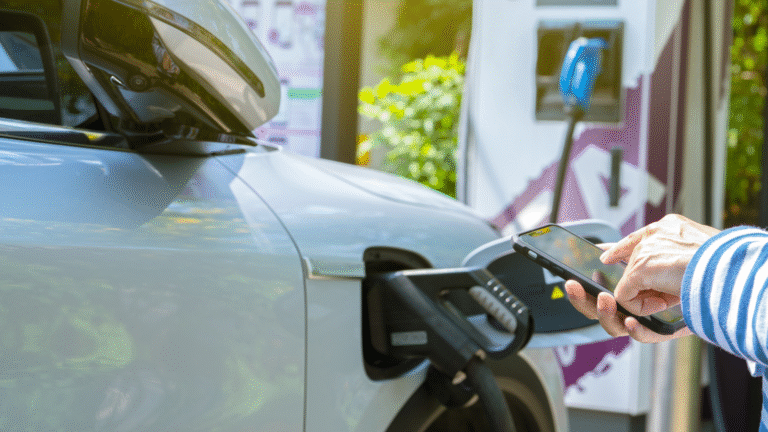Electric vehicles are prized for lower fuel and maintenance bills — but buying an EV also comes with less obvious expenses that catch some owners by surprise. From charger installation and home electrical upgrades to insurance quirks, fees and depreciation nuances, these hidden costs shape the true cost of ownership. This guide outlines the commonly overlooked expenses Australian EV owners should plan for to avoid unwelcome surprises.
Table of Contents
- Upfront and installation costs you might not expect
- Charging-related costs beyond kWh rates
- Maintenance surprises and repair realities
- Insurance, registration and specialised services
- Depreciation, warranty limits and resale factors
- Long-term and occasional costs (replacement battery, upgrades)
- FAQs
- Conclusion
1. Upfront and installation costs you might not expect
- Home wallbox and electrician fees: A good 7 kW–11 kW wallbox plus installation commonly costs more than many first-time buyers estimate. Older switchboards or long cable runs increase price.
- Switchboard or meter upgrades: Some houses need a switchboard upgrade or a new dedicated circuit — a significant extra cost.
- Battery storage & solar integration (optional): If you want to charge from rooftop solar overnight or reduce grid demand, adding a home battery increases capital cost substantially.
- Adapters and portable charging gear: If you’ll rely on destination and public charging, budget for cables and adapters that fit different inlet types.
Plan for these costs when assessing total buy-in price, not just vehicle sticker.
2. Charging-related costs beyond kWh rates
- Public fast-charging premiums: DC fast charging costs more per kWh and adds up if you rely on it frequently.
- Network fees & session charges: Some networks bill per-session or add connection fees. These can outstrip energy cost on short charging sessions.
- Subscription vs pay-as-you-go choices: Subscriptions can be worthwhile for high public use but wasteful if you mainly charge at home. Do the math.
- Idle fees and penalties: Expect penalties for overstaying at busy fast-charger bays — common on popular routes and urban hubs.
- Roaming surcharges: Using partner networks can add hidden charges; check roaming terms.
Understanding how often you’ll use which chargers is crucial to estimating ongoing costs.
3. Maintenance surprises and repair realities
- Tyre wear: EVs are heavier and deliver instant torque, which can accelerate tyre wear. Budget for earlier tyre replacement.
- Brake and suspension attention: While EVs have less brake wear, increased weight can affect suspension components and tyres more.
- Electronics and software support: Some repairs or software fixes may require OEM tools and dealer visits that cost more than comparable petrol repairs.
- High-voltage component repair: Although rare, battery or inverter repairs can be costly if out of warranty.
Routine servicing is often cheaper, but one-off expensive repairs are a real risk to plan for.
4. Insurance, registration and specialised services
- Higher premiums for some models: EV repairs can be more expensive due to parts and specialist labour, affecting premiums. Shop around for EV-friendly insurers.
- Roadside assistance differences: Make sure your plan includes EV-specific services like tow-to-charger or mobile charging; standard packages may not.
- Registration and potential road-user charges: Keep abreast of state policies—some jurisdictions have different fees or are trialling distance-based charges.
- Specialist locksmiths & vehicle recovery: Recovery of an EV requires technician knowledge; errant recoveries by untrained tow trucks can cause damage.
Insurance comparisons and adding EV-specific roadside cover are sensible.
5. Depreciation, warranty limits and resale factors
- Uncertain resale for some models: While many EVs now hold value well, models without wide local support or with uncertain battery health may depreciate faster.
- Warranty transferability: Some battery warranties may be non-transferable or have regional limits — check before buying used.
- Software lockouts & subscription features: Some manufacturers tie features to subscriptions or country-specific services; lost access can affect used value.
Factor resale expectations into your purchase maths, especially if you plan to trade in within a few years.
6. Long-term and occasional costs (replacement battery, upgrades)
- Battery replacement (rare but expensive): While uncommon within typical ownership windows thanks to warranties, a replacement pack is costly. Consider extended warranty or battery insurance if available.
- Software subscriptions & connected services: Some manufacturers charge for premium maps, driver aids or over-the-air feature packs — optional but recurring costs.
- Accessory and adaptation costs: Towbars, roof racks, and other accessories may require professional fitting and impact warranty if not installed correctly.
Long-term contingency planning for rare but expensive events is prudent.
FAQs
Q: Are EVs still cheaper overall despite hidden costs?
A: Often yes — significant fuel (electricity vs petrol) and servicing savings typically offset many hidden costs over several years. But it depends on driving habits and how often you rely on paid public charging.
Q: How do I estimate my true running cost?
A: Build a simple annual model: electricity (home + public), insurance, servicing, tyres, registration, and estimated depreciation. Compare with an ICE equivalent to make a decision.
Q: Should I get an extended warranty?
A: Consider it if the vehicle is used, older, or the battery warranty is limited. Extended warranties reduce the risk of high one-off repair bills.
Conclusion
EV ownership brings genuine cost advantages, but savvy buyers plan for often-overlooked expenses like charger installation, grid upgrades, public charging premiums, specialised insurance and potential high-cost repairs. A realistic total-cost outlook — including these hidden items — will help you choose the best model and charging strategy. With careful planning, the financial benefits of electrification still shine through; it just pays to budget beyond the purchase price.
Meta description: EVs save on fuel and routine servicing, but many owners miss hidden costs — charger installs, public charging fees, tyres, insurance and possible battery work. Learn how to budget properly.
